“It’s more of the same!” You just know that this is going to be the main comment (and complaint) about Octopath Traveler II. “It’s too much like the first.” Except it’s not. Of course it’s not. Octopath Traveler was a narrative-driven game that focused on the stories of eight distinct characters. Octopath Traveler II has eight entirely different characters. It is, therefore, a very different game in the way that is most relevant to it.
Related reading: Read our review of the original Octopath Traveler here.
The good news is that the developers listened to criticisms about how those stories were told in the original. The refinements they have brought to the sequel are incredible. It means that, in every way, Octopath Traveler II is a complete realisation of the ambition of the first.
Most JRPGs have a single “main” protagonist. Even party-based games, like most of the Final Fantasy, Dragon Quest, Trails, Tales or Atelier titles, generally have a focal point that the party coalesces around. Octopath Traveler, meanwhile, is a true example of an ensemble cast, and to quote the legendary filmmaker, Spike Lee, here “I tend to favour films that have multiple plot and storylines, multiple characters and ensemble pieces.” These narrative experiences are different, with each individual character and storyline contributing a more concise story in isolation, but the patchwork quality of a good ensemble project, and the dynamics that it creates between plotlines and characters, make for a much more vivid experience.
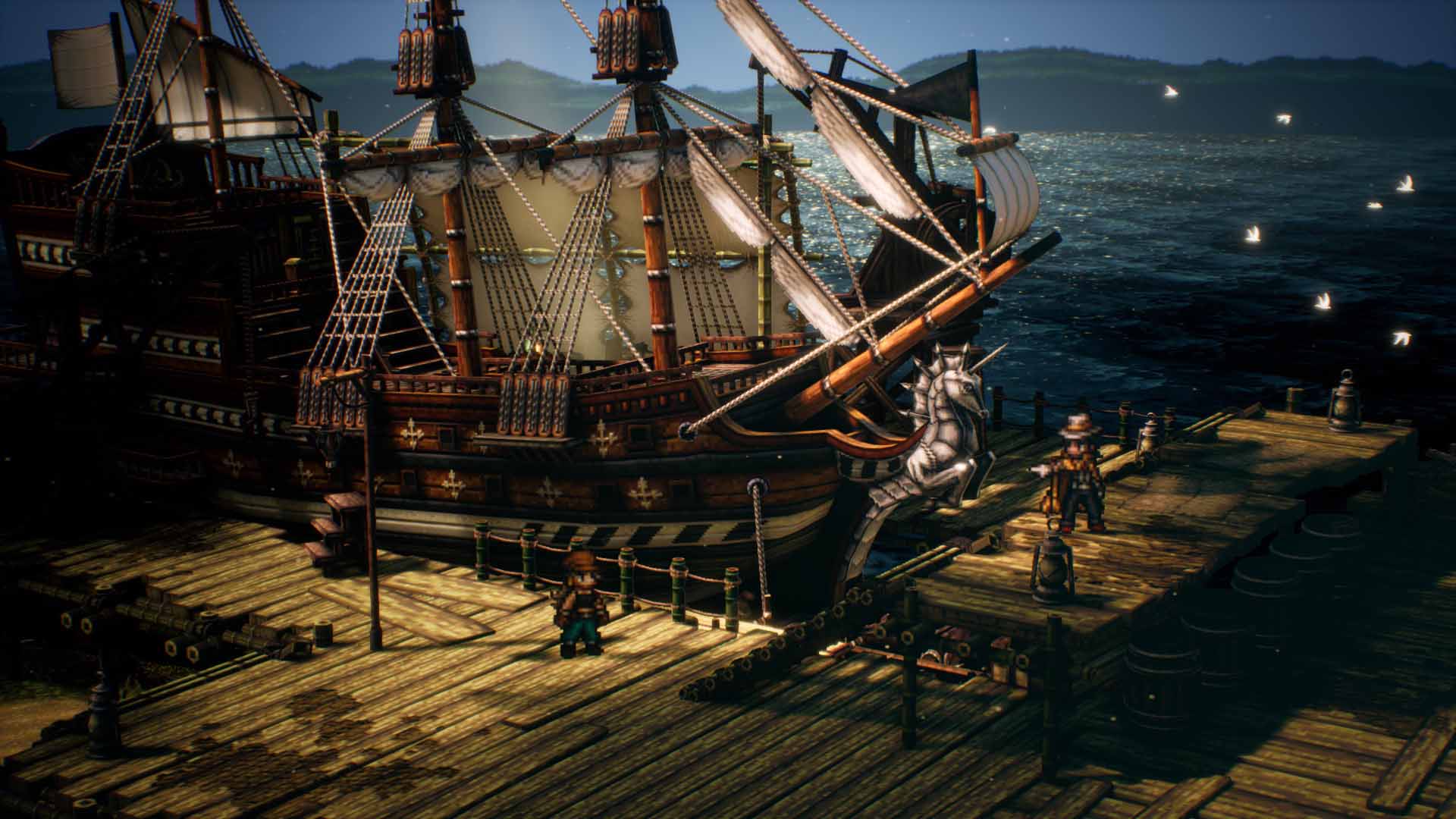
Such is the case with Octopath Traveler II. Each of the eight protagonists is the true focus of their own little story. Their “main” plot arcs can, technically (though not practically – you need assistance for combat and the like) be completed by themselves. It means the other characters are all mute during a sequence of a specific character’s story (since the developers had no way of knowing the make-up of the party with each new character’s chapter, and therefore couldn’t include them in the storytelling), but it means you’re getting eight clearly defined novellas (JRPGellas?) here in which the protagonist of each is an intense focus throughout. This allowed the developers to work with eight very different themes, structures, and stories, as each narrative arc didn’t need to be connected to any of the others. Some are light-hearted and classical JRPG arcs. Some are sweet and sentimental. Some will deliver a real gut punch or two. In a conventional JRPG with a conventional party structure, this would be chalked up as tonal dissonance, but it works in Octopath Traveler II thanks to the ensemble structure.
This was the case with the first game too, and in fairness, it was a structure that left some players feeling cold. The lack of dynamics between the characters was, to some, too much of a break from JRPG expectations and it felt like there was a critical piece missing of the storytelling jigsaw missing. Thankfully, this has been addressed cleverly in the sequel, because now there are stronger cross-over narrative arcs to play through too, that allow you to better enjoy the interplay and relationship between the characters in the party.
So, while the game still has a non-linear and “open” approach to how you experience the narrative elements, there is a more complex and nuanced structure to it, and one that helps you better appreciate the wide and disparate range of personalities on display. As far as the ensemble approach to JRPGs is concerned – think of the likes of Live A Live and the SaGa series – Octopath Traveler II is now the best example of this approach to storytelling in JRPGs.
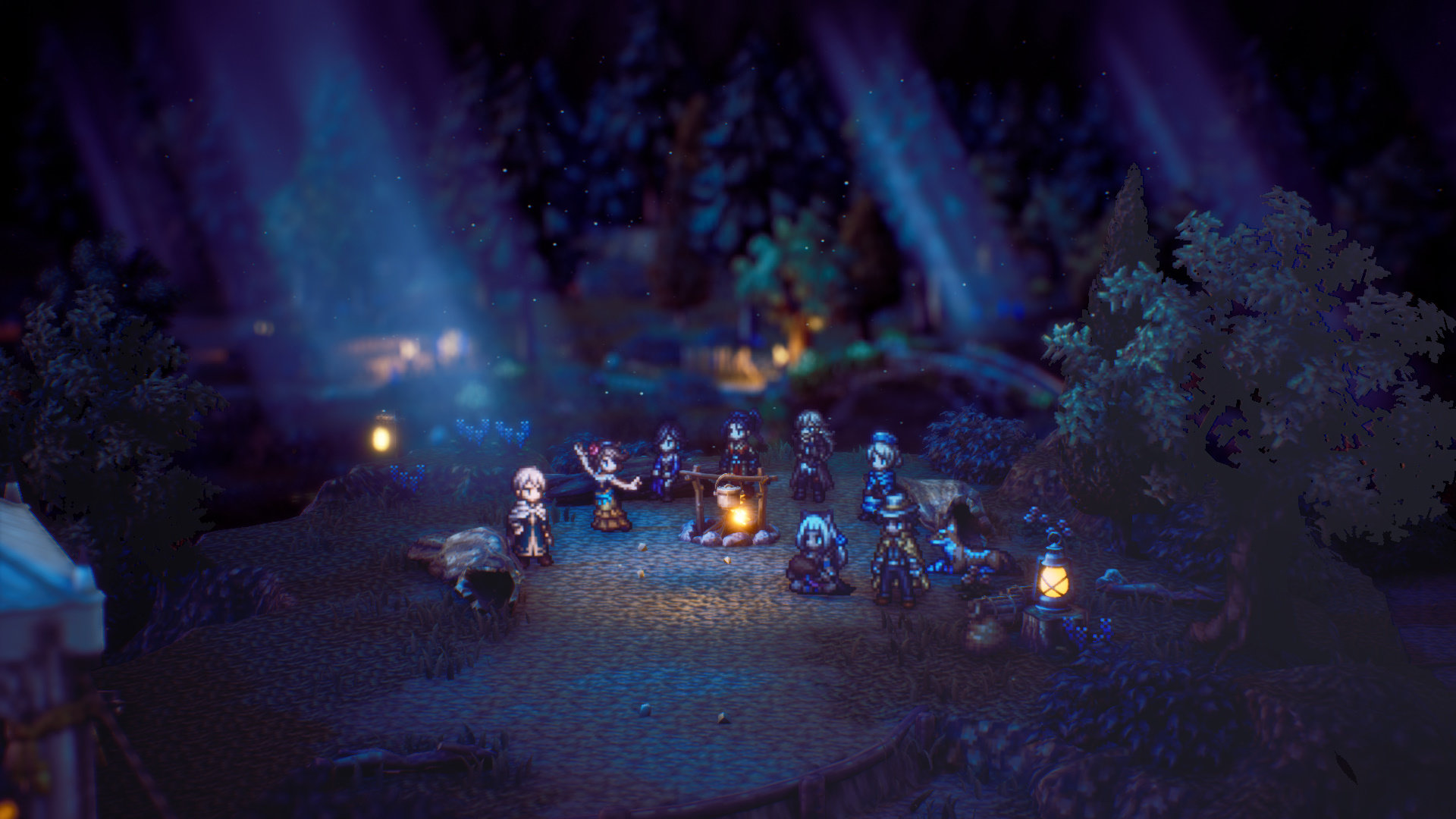
Mechanically the game is much the same as its predecessor. The basic flow of turn-based combat is the same, and it has the same feature as in the Bravely Default series in that you can use “points” that accumulate each turn to launch a series of attacks in a row. Enemies that are hit by weapons or skills that they’re weak to will eventually “break”, and that gives you a free turn to hit them with everything that you’ve got. Thanks to the sheer depth of skills and the different play styles of each character, this system comes across as highly dynamic and strategic. Outside of combat, there’s a lot to think about too, as each character can have several classes, and finding the right combination of skills and abilities is a hugely rewarding process – especially since you’ll need to undertake any number of side quests to gain “licenses” so that more characters in your party can have duplicates of some of the jobs.
What the developers have done to expand on the foundations set in the original Octopath Traveler is add a day/night cycle that has an impact beyond mere aesthetics. Characters have two non-combat special abilities that are unique to them. One works during the day, and one at night. Furthermore, the world changes at night, with different characters showing up and other circumstances shifting. You’re free to swap between day and night at will, and a lot of the narrative makes effective use of this system and the need to take advantage of all 16 non-combat abilities split across the eight heroes.
The day and night cycle does look gorgeous, though, as a bonus. In fact, everything about Octopath Traveler II is gorgeous. It’s easy to chalk that up to the engine – and the HD-2D effect is part of the visual appeal – but there is also more to it than that. The developers seem to have taken a pixel-by-pixel level of care with every environment, enemy design, and moment of animation to ensure that the entire screen is constantly filled with intricate visual details for the eyes to drink in. It’s almost too much, unfortunately. When playing in handheld mode I did find myself squinting at the screen from time to time, trying to figure out where paths were and whether scenery objects were significant or just part of the scenery. This is particularly true in the more wild environments (forests in particular), but overall, even at its most inconvenient, I felt the occasional minor inconvenience was worth the artistic vision. In docked mode, on a large TV, the effect is simply stunning.
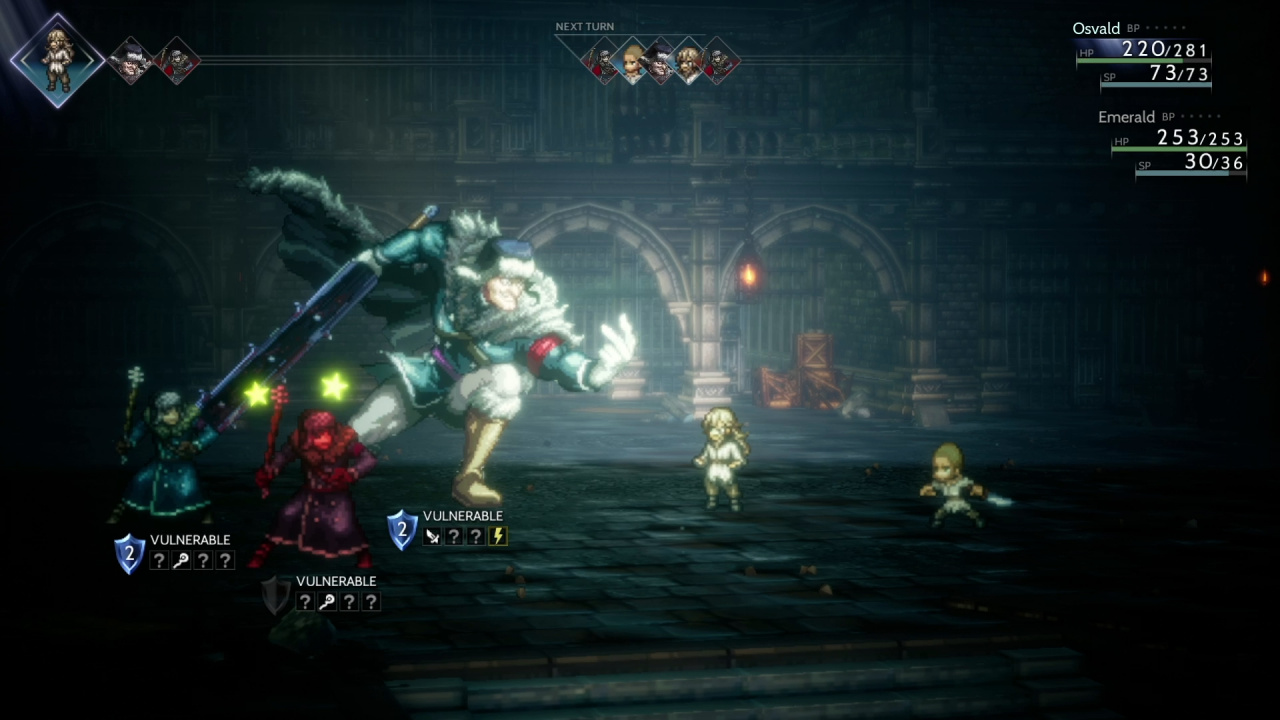
Octopath Traveler II’s core strength is its characters, and this bunch of eight heroes are some of the finest you’ll find in the genre. There’s a real emotional rollercoaster built into the way you’ll experience their stories stacked on top of one another, and it’s backed by some amazing worldbuilding, a slick and strategic combat system, and, of course, those stunning HD-2D aesthetics. The original was already exceptional. This is even better.

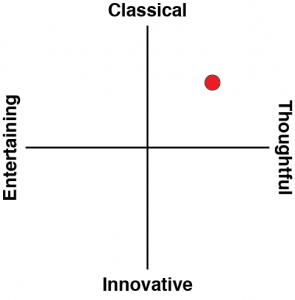
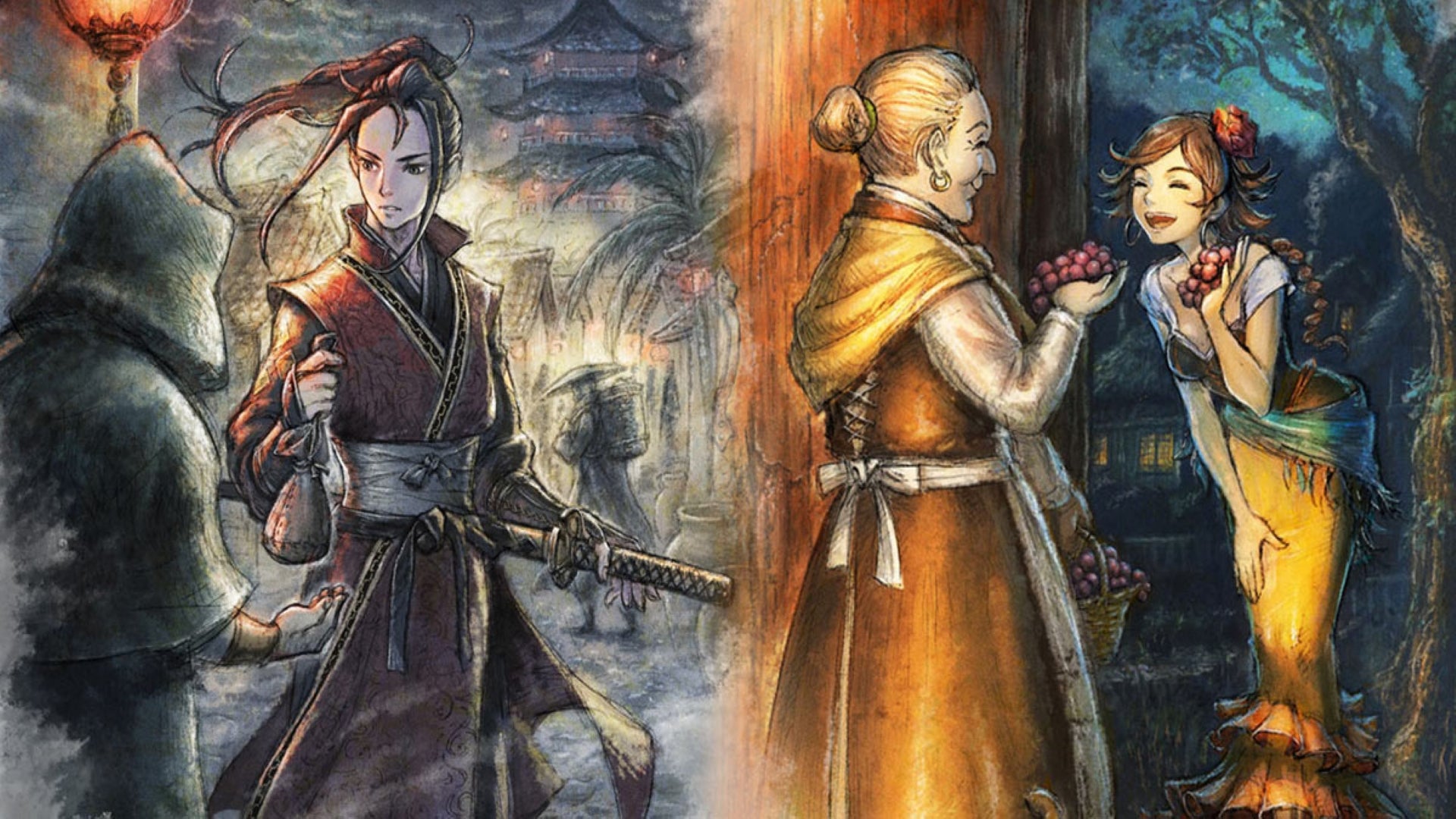








Well, it’s won me over! My only question is, is it a stand-alone narrative or do you need to have played the original?
Nope, no need to have played the first! Totally self-contained. 🙂
Great review. Will probably grab the game at some point, but currently addicted to Labyrinth of Galleria.(hope you review the game eventually)
Thanks for the note! I am working on that one, yes 🙂